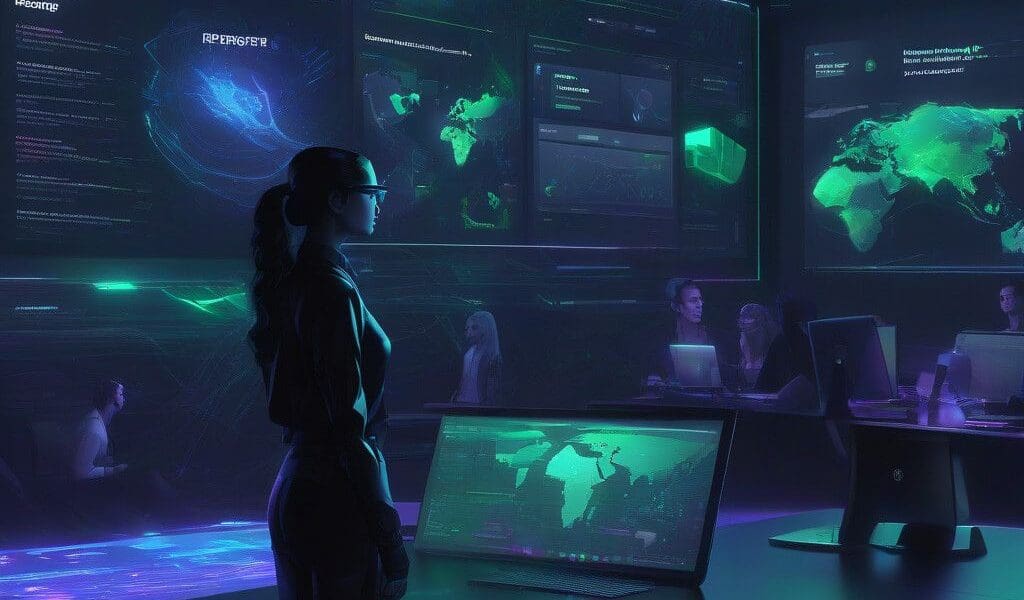Artificial intelligence (AI) is rapidly transforming various sectors, particularly in enhancing user experiences across diverse applications. The latest innovation in this realm is Brave’s introduction of Leo AI, an AI assistant designed to elevate web browsing through advanced content summarization, query responses, and search results—all while maintaining a focus on user privacy. This innovative assistant employs NVIDIA’s powerful Graphics Processing Units (GPUs) to achieve remarkable efficiency and speed.
Brave’s approach to AI integration signifies a broader shift towards utilizing advanced technology in everyday online interactions. As many organizations are increasingly recognizing the value of AI, Leo AI stands out by prioritizing a privacy-first strategy, a need that resonates strongly with the modern consumer. Users benefit from prompt and accurate information processing without compromising their data security.
The performance of Leo AI is significantly enhanced by NVIDIA’s GPUs. These chips are not just powerful; they incorporate Tensor Cores, specifically designed for accelerating AI tasks. By processing multiple operations simultaneously—a technique known as parallel processing—NVIDIA GPUs can efficiently handle complex calculations that underpin AI functionalities. This capability allows Leo AI to provide quick responses that users require while browsing.
The synergy between software and hardware is crucial in maximizing AI performance. Brave has carefully selected several layers to support Leo AI’s operational needs. At the core, it uses the llama.cpp inference library, which is well-regarded in the AI community for its capabilities in converting tasks into machine-readable instructions. Furthermore, the integration of NVIDIA TensorRT and Microsoft’s DirectML further boosts the performance of Leo AI by optimizing the execution of these instructions on NVIDIA hardware.
Local inference servers play a critical role in Brave’s strategy. These servers help manage the installation of various AI models, streamlining the integration into applications like Leo AI. Ollama, an open-source project built on llama.cpp, democratizes access by allowing users to harness local AI processing capabilities easily. By leveraging NVIDIA technology, Ollama enhances its operations to work seamlessly with NVIDIA’s RTX-powered AI solutions, catering to the growing demand for efficiency.
One of the standout features of Leo AI is its flexibility in operational environments. It can function both in the cloud and locally on a personal computer via Ollama. This dual approach ensures that users have complete control over their data processing activities. The privacy benefits of local processing cannot be overstated. Users can keep their data secure, as all necessary computations happen directly on their devices. This approach not only protects sensitive information but also eliminates the potential costs associated with cloud service fees.
The ability to run local AI models via Ollama also provides users with a wider array of choices compared to many cloud-based platforms. These options include specialized models that may offer unique features, like multilingual capabilities or advanced code generation. The efficiency of local AI operations is exemplified by the speed at which the Llama 3 8B model can generate responses, reaching about 149 tokens or approximately 110 words per second, thanks to NVIDIA’s advanced technology.
Setting up this local AI experience is straightforward for Brave users. The installation process is simplified through an easy-to-download installer that operates quietly in the background on their computers. Once installed, users can immediately access a diverse range of AI models directly through simple commands, allowing them to switch between cloud services and local models with ease. This level of adaptability ensures that users can select the best option based on their specific needs at any given moment.
As part of a more extensive initiative in the AI realm, NVIDIA actively supports developers through resources available on their developer blog. This guidance focuses on effectively utilizing systems like Ollama and llama.cpp, reflecting a trend towards more responsive and capable AI tools woven seamlessly into the fabric of daily technology interactions.
In summary, Brave’s Leo AI, fortified by the robust capabilities of NVIDIA’s GPUs, represents a significant advancement in web browsing technology. The combination of efficient hardware and innovative software not only enhances user productivity but also sets a new standard for privacy in the digital landscape. As businesses and consumers alike continue to explore the potential of AI, solutions like Leo AI will undoubtedly lead the way in making digital experiences more efficient, secure, and user-friendly.












